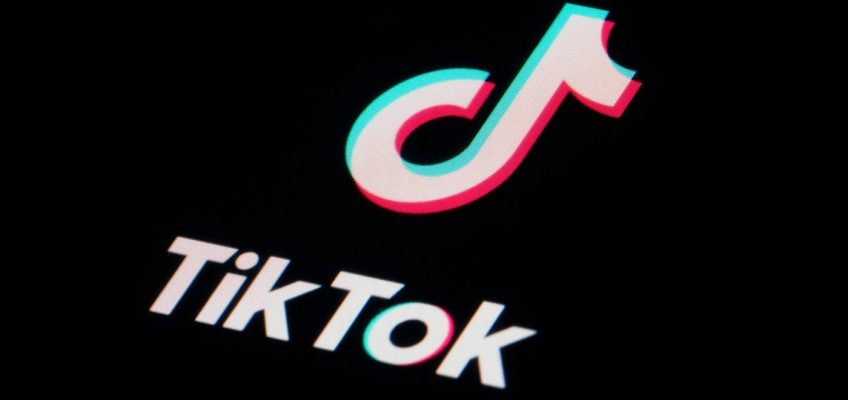By Rachana Pradhan and Aneri Pattani, KFF Health News
The National Institutes of Health employee said she knew things would be difficult for federal workers after Donald Trump was elected. But she never imagined it would be like this.
Focused on Alzheimer’s and other dementia research, the worker is among thousands who abruptly lost their jobs in the Trump administration’s federal workforce purge. The way she was terminated — in February through a boilerplate notice alleging poor performance, something she pointedly said was “not true” — made her feel she was “losing hope in humans.”
She said she can’t focus or meditate, and can barely go to the gym. At the urging of her therapist, she made an appointment with a psychiatrist in March after she felt she’d “hit the bottom,” she said.
“I am going through hell,” said the employee, who worked at the National Institute on Aging, one of 27 centers that make up the NIH. The worker, like others interviewed for this story, was granted anonymity because of the fear of professional retaliation.
“I know I am a mother. I am a wife. But I am also a person who was very happy with her career,” she said. “They took my job and my life from my hands without any reason.”
Trump administration sued over decision to rescind billions in health funding
New Jersey Sen. Booker presses his marathon speech against Trump’s agenda past 17 hours and counting
Layoffs begin at US health agencies responsible for research, tracking disease and regulating food
FDA’s top tobacco official is removed from post in latest blow to health agency’s leadership
A Senate vote to reverse Trump’s tariffs on Canada is testing Republican support
President Trump and his allies have increasingly denigrated the roughly 2 million people who make up the federal workforce, 80% of whom work outside the Washington, D.C., area. Trump has said federal workers are “destroying this country,” called them “crooked” and “dishonest,” and insinuated that they’re lazy. “Many of them don’t work at all,” he said earlier this month.
Elon Musk — who is the world’s richest person and whose Department of Government Efficiency, created by a Trump executive order, is infiltrating federal agencies and spearheading mass firings — has claimed without evidence that “there are a number of people on the government payroll who are dead” and others “who are not real people.” At a conference for conservatives in February, Musk brandished what he called “the chain saw for bureaucracy” and said that “waste is pretty much everywhere.”
The firings that began in February are taking a significant toll on federal employees’ mental health. Workers said they feel overwhelmed and demoralized, have obtained or considered seeking psychiatric care and medication, and feel anxious about being able to pay bills or afford college for their children.
Federal employees are bracing for more layoffs after agencies were required to deliver plans by this month for large-scale staff reductions. Compounding the uncertainty: After judges ruled that some initial firings were illegal, agencies have rehired some workers and placed others on paid administrative leave. Then, Trump on March 20 issued a memo giving the Office of Personnel Management more power to fire people across agencies.
Researchers who study job loss say these mass layoffs not only are disrupting the lives of tens of thousands of federal workers but also will reverberate out to their spouses, children, and communities.
“I’d expect this will have long-lasting impacts on these people’s lives and those around them,” said Jennie Brand, a professor of sociology at UCLA who wrote a paper about the implications of job loss. “We can see this impact years down the road.”
FILE – Demonstrators gather outside of the Edward A. Garmatz United States District Courthouse in Baltimore, on Friday, March 14, 2025, before a hearing regarding the Department of Government Efficiency’s access to Social Security data. (AP Photo/Stephanie Scarbrough, File)
Studies have shown that people who are unemployed experience greater anxiety, depression, and suicide risk. The longer the period of unemployment, the worse the effects.
Couples fight more when one person loses a job, and if it’s a man, divorce rates increase.
Children with an unemployed parent are more likely to do poorly in school, repeat a grade, or drop out. It can even affect whether they go to college, Brand said. There’s an “intergenerational impact of instability,” she said.
And it doesn’t stop there. When people lose their jobs, especially when it’s many people at once, the wealth and resources available in their community are reduced. Kids see fewer employed role models. As families are forced to move, neighborhood stability gets upended. Unemployed people often withdraw from social and civic life, avoiding community gatherings, church, or other places where they might have to discuss or explain their job loss.
Although getting a new job can alleviate some of these problems, it doesn’t eliminate them, Brand said.
“It’s not as if people just get new jobs and then pick up the activities they used to be involved with,” she said. “There’s not a quick recovery.”
Slashing cultural norms
The firings are upending a long-standing norm of the public sector — in exchange for earning less money compared with private-sector work, people had greater job security and more generous benefits. Now that’s no longer the case, fired workers said in interviews.
With the American economy moving toward temporary and gig jobs, landing a traditional government job was supposed to be “like you’ve got the golden goose,” said Blake Allan, a professor of counseling psychology at the University of Houston who researches how the quality of work affects people’s lives.
Even federal workers who are still employed face the daily question of whether they’ll be fired next. That constant state of insecurity, Allan said, can create chronic stress, which is linked to anxiety, depression, digestive problems, heart disease, and a host of other health issues.
Demonstrators gather outside of the Edward A. Garmatz United States District Courthouse in Baltimore, on Friday, March 14, 2025, before a hearing regarding the Department of Government Efficiency’s access to Social Security data. (AP Photo/Stephanie Scarbrough)
One employee at the Centers for Medicare & Medicaid Services, who was granted anonymity to avoid professional retaliation, said the administration’s actions seem designed to cause enough emotional distress that workers voluntarily leave. “I feel like this ax will always be over my head for as long as I’m here and this administration is here,” the employee said.
Federal workers who passed on higher-paying private sector jobs because they wanted to serve their country may feel especially gutted to hear Trump and Musk denigrate their work as wasteful.
“Work is such a fundamental part of our identity,” Allan said. When it’s suddenly lost, “it can be really devastating to your sense of purpose and identity, your sense of social mattering, especially when it’s in a climate of devaluing what you do.”
Andrew Hazelton, a scientist in Florida, was working on improving hurricane forecasts when he was fired in February from the National Oceanic and Atmospheric Administration. The mass firings were carried out “with no humanity,” he said. “And that’s really tough.”
A person wearing a shirt covered in books holds a copy of the novel “Fahrenheit 451” while protesting in support of the Institute of Museum and Library Services (IMLS), Thursday, March 20, 2025, outside the IMLS in Washington, after hearing that DOGE had shown up to the office. (AP Photo/Jacquelyn Martin)
Hazelton became a federal employee in October but had worked alongside NOAA scientists for over eight years, including as an employee at the University of Miami. He lost his job as part of a purge targeting probationary workers, who lack civil service protections against firings.
His friends set up a GoFundMe crowdfunding page to provide a financial cushion for him, his wife, and their four children. Then in March, after a federal judge’s order requiring federal agencies to rescind those terminations, he was notified that he had been reinstated on paid administrative leave.
“It’s created a lot of instability,” said Hazelton, who still isn’t being allowed to do his work. “We just want to serve the public and get our forecasts and our data out there to help people make decisions, regardless of politics.”
Health coverage collateral
Along with their jobs, many federal workers are losing their health insurance, leaving them ill equipped to seek care just as they and their families are facing a tidal wave of potential mental and physical health consequences. And the nation’s mental health system is already underfunded, understaffed, and overstretched. Even with insurance, many people wait weeks or months to receive care.
“Most people don’t have a bunch of money sitting around to spend on therapy when you need to cover your mortgage for a couple months and try to find a different job,” Allan said.
A second NIH worker considered talking to a psychiatrist and potentially going on an antidepressant because of anxiety after being fired in February.
“And then the first thought after that was: ‘Oh, I’m about to not have insurance. I can’t do that,’” said the worker, who was granted anonymity to avoid professional retaliation. The worker’s health benefits were set to end in April — leaving too little time to get an appointment with a psychiatrist, let alone start a prescription.
“I don’t want to go on something and then have to stop it immediately,” the worker said.
Elon Musk flashes his t-shirt that reads “DOGE” to the media as he walks on South Lawn of the White House, in Washington, Sunday, March 9, 2025. (AP Photo/Jose Luis Magana)
The employee, one of several NIH workers reinstated this month, still fears getting fired again. The worker focuses on Alzheimer’s and related dementias and was inspired to join the agency because a grandmother has the disease.
The worker worries that “decades of research are going to be gone and people are going to be left with nothing.”
“I go from anxiety to deep sadness when I think about my own family,” the employee said.
The NIH, with its $47 billion annual budget, is the largest public funder of biomedical research in the world. The agency awarded nearly 59,000 grants in fiscal 2023, but the Trump administration has begun canceling hundreds of grants on research topics that new political appointees oppose, including vaccine hesitancy and the health of LGBTQ+ populations.
The NIH worker who worked at the National Institute on Aging was informed in mid-March that she would be on paid administrative leave “until further notice.” She said she is not sure whether she would find a similar job, adding that she “cannot be at home doing nothing.”
Apart from loving her job, she said, she has one child in college and another in high school and needs stable income. “I don’t know what I’m going to do next.”
KFF Health News is a national newsroom that produces in-depth journalism about health issues and is one of the core operating programs at KFF—an independent source of health policy research, polling, and journalism. Learn more about KFF.
©2025 KFF Health News. Distributed by Tribune Content Agency, LLC.




